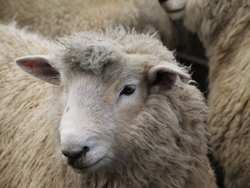New vaccine gives a rough ride for brucellosis
Brucellosis melitensis (B. melitensis) causes reproductive problems in ruminants like sheep and goats. As it is zoonotic, it can be transmitted to humans, mainly through the consumption of undercooked meat. In southern Europe in particular, it causes economic losses and human suffering. Vaccination is one approach for sustainable control of the disease. Previous to the BRU-VAC project, the vaccines in use were beset with problems. For example, the Smooth strain Rev 1 vaccine induces a strong antibody response to the lipopolysaccharide S-LPS. Since S-LPS is the main antigen used in serological testing, this posed problems. Furthermore, the strain used for the Rev 1 vaccine is resistant to the antibiotics used to treat human brucellosis, a major disadvantage. Also, the Rev 1 vaccine does not confer complete resistance. The project team at the University of Navarra in Spain worked on a rough (R) vaccine based on a mutation of a gene selected from laboratory models and sheep. It possesses markers for easy typing and has a typing protocol for the polymerase chain reaction (PCR). From the point of view of human safety, it is safer than Rev 1 and is not resistant to the antibiotics used for human brucellosis. Further research on these lines is required as the vaccine does not afford the level of protection conferred by the Rev 1 vaccine. However, it may be useful as a prophylactic in certain circumstances or form the basis for further developments for effective and sustainable control of the disease.







